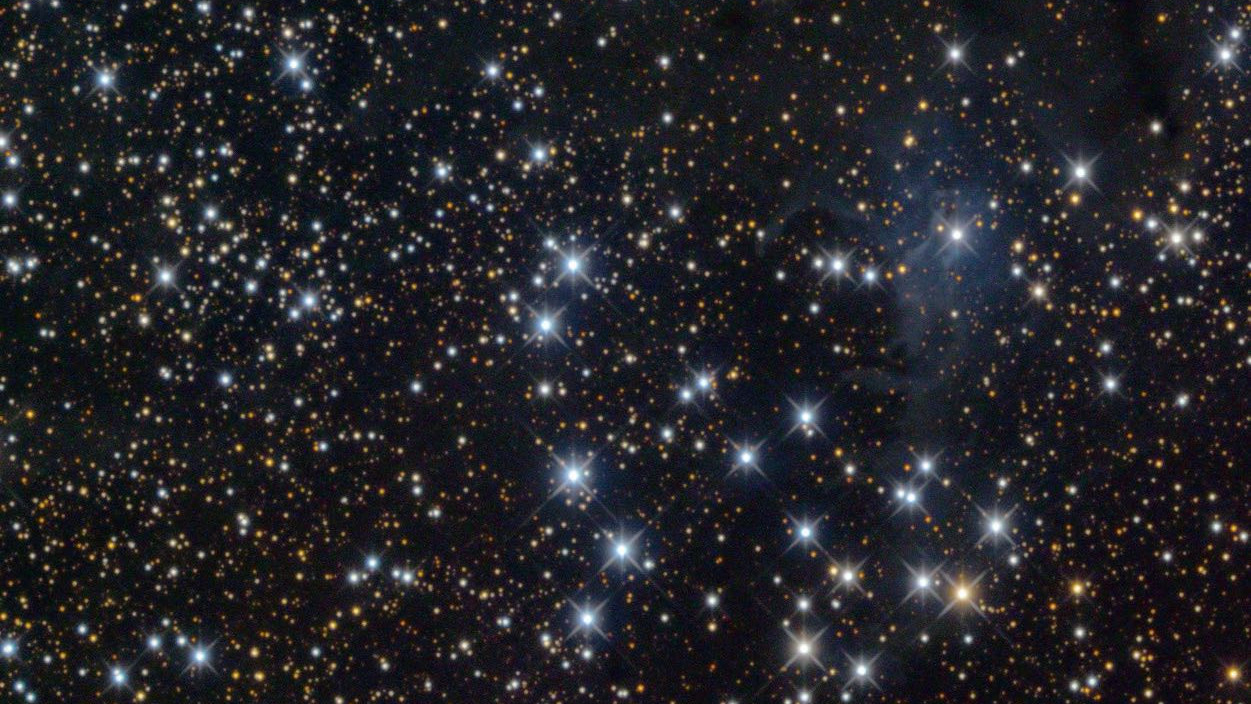In the west of W-shaped Cassiopeia
Cassiopeia’s W-shape is home to many beautiful deep sky destinations; we visit some lesser-known objects on this tour.
 The open cluster known as the Sailboat Cluster, NGC 225 - shot with a 6” Intes MK 69 telescope with 900mm focal length. Günter Kerschhuber
The open cluster known as the Sailboat Cluster, NGC 225 - shot with a 6” Intes MK 69 telescope with 900mm focal length. Günter KerschhuberCassiopeia is home to a whole series of bright deep sky objects; for this tour I have selected some from the western section of the constellation, some of which are not quite so well known.
Caroline's Rose
Located 3° south-west of Caph (β Cas) is a large round fuzzy area, which is also noticeable in smaller binoculars: the open cluster NGC 7789. Named after its discoverer Caroline Herschel, it is known as Caroline’s Rose (also known as Caroline’s Haystack). However, this “rose” of stars usually remains unseen, because even the brightest of them are too faint for smaller binoculars.
If you head back to Caph with your binoculars and then about another 3° further north-east, you arrive at NGC 129 - an open cluster that you can at least partially resolve. A bright star stands directly to the south, and through 10×50 binoculars you will be able to make out up to 14 stars - assuming the visibility conditions are good.
 A chain of star clusters is the destination of this tour. Nebula NGC 281 is a special challenge. J. Scholten
A chain of star clusters is the destination of this tour. Nebula NGC 281 is a special challenge. J. ScholtenHeavenly sailing boat
If we stay on course and travel a little further 2° north-east from NGC 129, we will come across open cluster NGC 225, also known as the Sailboat Cluster. Observed through binoculars, it’s easy to understand the origin of its name: around 10–15 stars form a semicircular shape, which you could easily imagine being a ship's hull. With a little more imagination, you will find another one or two stars to represent its mast.
Difficult Pacman
The only galactic nebula in the region that is accessible with binoculars, NGC 281, is located about 1.5° east of Schedar (α Cas). It represents something of a challenge. Your best chance of locating the Pacman Nebula, as it is also known due to its appearance when observed with larger telescopes, is by using the largest possible exit pupil as well as nebula filters. With 50mm binoculars, you need very good observing conditions and averted vision to detect a faint fleck of nebula surrounding multiple star Burnham 1.
Author: Kay Hempel / Licence: Oculum-Verlag GmbH
